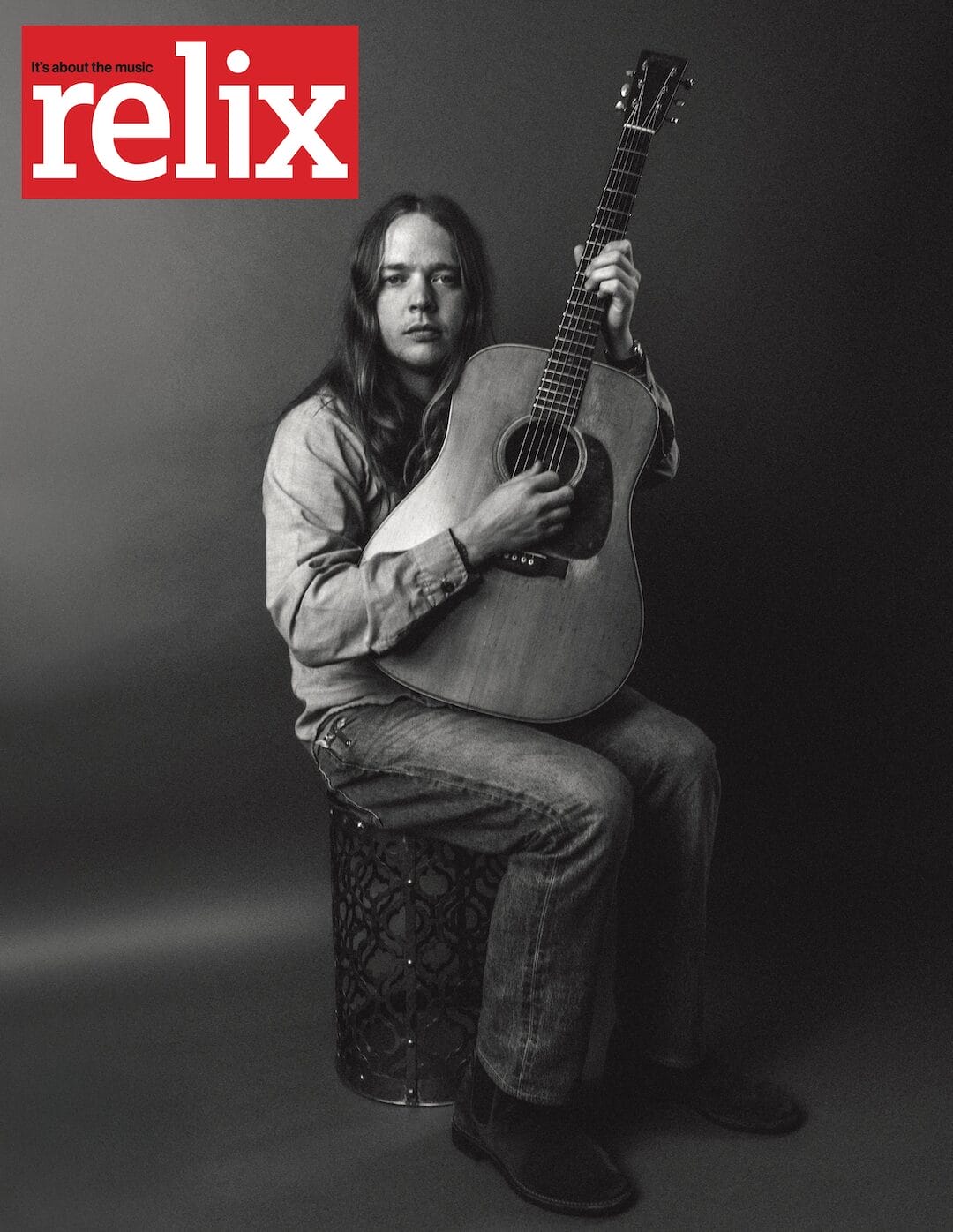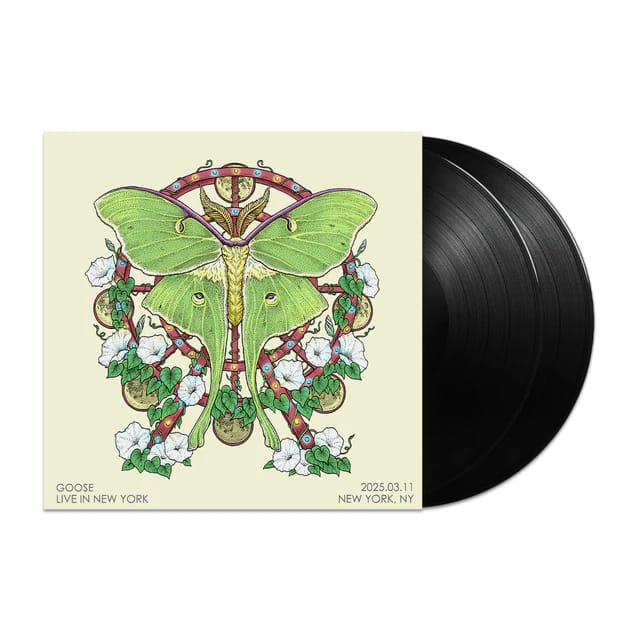The Core: Tim Reynolds

The Dave Matthews Band guitarist digs in on improvisation, rolling with the COVID punches and a pair of wild, new albums.
The Miles Davis Thing
During the COVID [lockdown], the thing I did the most to stay sane was play because, when I am stressed, I play a lot. That’s my place to go. If the world was gonna end, I would be playing the guitar. Right before the lockdown, we had a Dave Matthews Band tour going to Australia, and I had a solo tour in the works. I was also thinking about writing some new music so, when COVID hit, I just continued writing these tunes—I had all the time in the world. I also learned a Beethoven piece, “Moonlight Sonata,” which was a big challenge for me. Even if I didn’t play it right, I wanted to make myself learn this piano piece. It took me a couple of months because I don’t read music so I had to write it down, note for note.
I also spent a lot of time practicing improvisation. I would put on an album that I really liked or that I just got and play to it. I played to all kinds of things—Arcade Fire’s The Suburbs, Bowie, Radiohead’s “Daydreaming,” which I saw them open with once and it gave me chills. I didn’t like The Suburbs at first but, once I started playing to it, I realized that, though the songs sound simple, they are not.
And, eventually, you start playing something different. It is like with Dave Matthews Band— you’re improvising every night, unless it is one of the songs that has a shorter solo that is on the record which, to me, are part of the song. But, on something like “#41,” you are never playing what you played last night. That’s the Miles Davis thing. So I think it ended up being a fresh year [on tour] because of that.
Soul Pilgrimages
About three years ago, I moved to Sarasota, Fla., which I have to make sure I say right because, for many years, I’ve played in Saratoga, N.Y. every summer. I hadn’t even heard of Sarasota until about a year before I lived there, but it is the coolest little place on the west coast of Florida—it is really cosmopolitan. I just wanted to get out of North Carolina—where I lived in North Carolina, there was the threat of hurricanes more than once. And, even though they don’t always manifest, it just kinda wears you out. So, that year, I did a lot of touring with TR3 and scoped out places that I liked. California is, of course, the most awesome place, but it’s so expensive. And, unless you decided to move there a long time ago, it just seems insane.
So we happened upon this one place in Florida where our tour manager from DMB has lived in for like 30 years. My entire life I have slowly moved to hotter and hotter places— when I was a kid in the ‘60s, we lived in Alaska. Then, I lived in Kansas, Missouri and Virginia, where I lived for 16 years. Then, I moved to Santa Fe for about 10 years and North Carolina for 11 years. So, for the past 30 years, every 10 years or so, it seems to be the order of the day—in a natural way. We’ll see if I end up back in Scandinavia or in Portugal in another few years.
We’ve had the idea to make a guitar/synthesizer project like Soul Pilgrimage for a couple years, and during the darkest COVID months— when everybody was in the bunker—Michael Sokolowski was like, “I got this thing I’ve kinda been working on.” He set up this amazing 26-minute layered track and asked me to improvise on it. It took a minute to figure out how to do that because I don’t have a home studio, but I ended up making two passes. The first take had a lot of effects on it and, on the second one, I didn’t think about the knobs and just played.
I sent that over and Michael said, “The first one’s better” and we started sending tracks back and forth. Michael took what I had recorded and added some things, so my job was really to improvise and he ended up putting it all together. We also spent a very fun afternoon together recording— it was awesome.
A Fulfilled Musician
[SeepeopleS frontman and CommunityZ RecordZ/ARME Group’s] Will Bradford asked me if I was interested in doing a charitable single, and it was the easiest thing in the world for me to say yes to it—100% of the proceeds go to PHAR [Charlottesville Public Housing Association of Residents]. Will and I had done gigs together, and he asked me if I had any tracks. I know how to mess with this really simple drum machine, and I had made a bunch of recordings when I lived in Santa Fe—I had this extremely crude space and made these four-track recordings. It was a period of my life where I was just enjoying the hell out of being the drummer, so I’d make these drum-machine tracks that sounded like Phil Collins and put together these CDs. I’d made this one montage-y track, “Guardian Angels,” that had this Brazilian groove that Will liked. We had Nikki Glaspie, who already had a setup ready to go, record some drums. I remember seeing her when she was in Dumpstaphunk—they played with my band and on the DMB Caravan—and thinking, “That girl is bad on the drums.”
Will had the idea to film a video to go along with the track, and we decided to film down in Charlottesville while I was rehearsing with DMB. They filmed me at this graveyard I used to like to walk around and at these railroad tracks I used to go to. I don’t get up until noon because I’m someone who sleeps late and, by the time I got up, Will had texted me and said, “You won’t believe it—they are taking down these Confederate statues, and we got it on film.”
We ended up including that in the video, which is great because, when the white supremacists and the Nazis and the rednecks came storming Charlottesville a few years ago, it was one of the worst things I’ve seen in my life. I haven’t lived there for 20 years, but I cried inside. DMB immediately played a benefit there with Stevie Wonder, and it was pretty amazing. I had never made a video, for myself, and probably never will again. I’m a well-known enough personality, and I am satisfied playing acoustic gigs and TR3 gigs in these clubs. And that, to me, is a really cool way to stay connected to these different audiences— audiences that share a lot of commonalities with the DMB audience. So I feel like such a fulfilled musician.
Blissful Confidence
[TR3] are feeling really confident; we’re playing so well because that trio has been together for over 10 years. It’s started to feel really good—blissful. And I think this recording really captured that. We were competent enough to just come out and improvise. That first track on our new live record, Wild in the Sky is “Stick It Good,” which was named right after we played it. We just listened back to it and named it. We included as many tracks from the new record [The Sea Versus the Mountain] as we could, and then we included some really cool additional tracks. Most of the tracks are from the last tour we did in 2019, and there are a few from 2018. They are great soundboard recordings and I had plenty of time during the pandemic to listen back to everything that we wanted to include.
One notable [thing] is that we have Joe Lawlor, who’s a great friend of ours from way back in the day, on it. He’s been a tech for DMB for quite a while and always sits in with the band in Virginia. And it’s a tradition that he sits in with TR3 a lot when we’re in town. We told him, “Bring the smallest amp you have and we’ll mic it—crank it.” So he brought a lunchbox-sized amp, and we did a 10-minute jam to this Tom Waits song “Chicago.” It’s a train song, but the way he did it was like half time. We just came out swinging—Joe and I really go to town. He’s a great guitar player. There’s a lot of space where I’m just playing and he’s just wailing. And we definitely do a lot of crazy trading—where we’re both totally completely insane. It doesn’t sound like a studio album but, compared to many live albums that I’ve made, it’s easily accessible. Some live albums are really just live recordings.
Two Men Down
When I did my little tour back in June, it was right before Delta became a thing. It was the beginning of “everything’s fine” and everything was fine for a while. We got to play gigs every night. We were vaccinated. We were happy to wear a mask inside. Then, I came home to practice all the DMB music and start rehearsals for our tour. And, the first week we started the tour, one of the crew guys got Delta and then another guy got it. And, about halfway in, Carter [Beauford] and Stefan [Lessard] got it right before we played the Gorge. We just had to keep ramping up our COVID protocols.
It was quite a weekend. It started out being very stressful because we found out Stefan was positive the night before, and we found out about Carter right before our first Gorge show. When I heard about Stefan, I was like, “Well, at least we are only one man down” and then, Dave was like, “Well, actually…” Dave was up all night figuring out how to do this—we could have done the duo thing all night, but it wouldn’t really be the same and what people were expecting. But, he had a great plan, and we got Tony Hall from Dumpstaphunk to play. We already had a relationship with him from Dave Matthews & Friends; luckily he was already there. We all already knew that Buddy [Strong] was a good drummer, and then we had Dumpstaphunk’s drummer [Deven Trusclair] come out for the encore so Buddy could come back to the keys. [After this interview was conducted in November, saxophonist Jeff Coffin also tested positive for COVID and was forced to sit out two shows.]
Singing on the Slide
If I only had a little bit of time to practice for a DMB tour, I would use it to improvise. It takes half an hour to really improve because, for the first half an hour, you’re just kinda blowing off the cobwebs— playing some things to get physically comfortable. And then you start playing some shit, man. As an improviser, I want to sound like a singer. You can play a lot of crazy notes, and I have spent years investigating that, but the stuff that moves you to tears is the melody.
Sometimes, when I am practicing the slide, I just wanna learn what the singer’s doing—I wanna learn the melody. I love the singer from Rival Sons [Jay Buchanan]. Their melodies are very simple, but they’re very strong. It’s like how Bonnie Raitt plays—she doesn’t have to play more than four or five notes. She could play one note and move that shit around and you’re giddy. I even told her that one night when I got to say hi to her at Farm Aid a couple of years ago. It was like, “God damn it! That was good!”



















